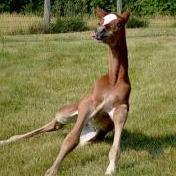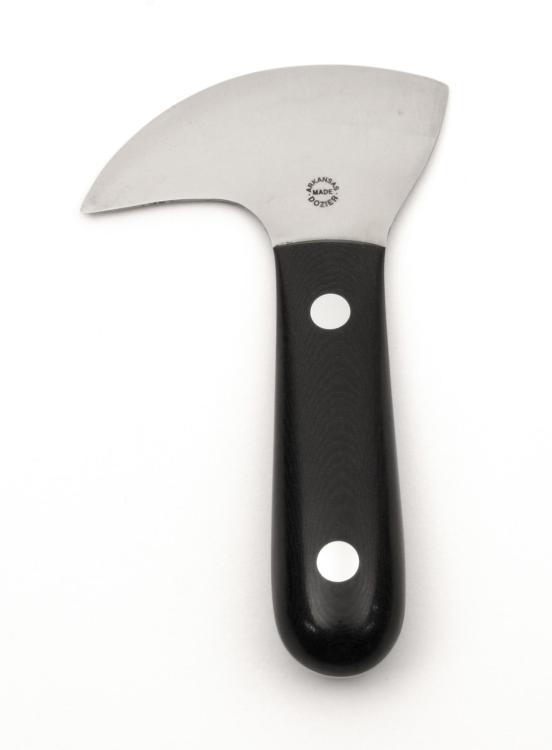-
Posts
1,282 -
Joined
-
Last visited
Content Type
Profiles
Forums
Events
Blogs
Gallery
Everything posted by TomE
-
Curious about using a dry Arkansas stone. Is there an advantage over oiling the stone? I thought the oil helps prevent clogging with debris. Thanks for the info.
-
No complaints. That's top drawer craftsmanship.
-
Nice work. The artwork and color are very attractive.
-
Thank you for these resources. Your website looks like a very interesting read. Will enjoy browsing through it later today.
- 7 replies
-
- vegetabletanned
- vegtan leather
-
(and 4 more)
Tagged with:
-
Does togo leather have a "grippy" feel? Sort of like a gum eraser? A friend bought an $$$$ dressage saddle that has a matte finish and a soft, grippy feel. The saddle maker Erreplus says it is made from Italian bull leather (not to be confused with the Italian Stallion ) and that it will retain this grippy texture with use. I am interested in learning more about the tanning process for this leather. Sorry to highjack this post.
-
Harry Rogers' book on making shoes. Can buy it on Amazon. He also has a Youtube channel.
-
Sharp looking apron. I like your use of colors, and of course the tooling is beautiful.
-
My advice would be to focus on one or two projects using hand tools, develop the required skills, then buy machines as you decide what you enjoy making and have a specific use for a machine. For me it was a lot of hand sewing and learning to cut out shapes and cut straps then how to split and skive leather. I did a lot of hand skiving before I bought a used bell skiver. It is a luxury that I probably didn’t need but it helps me refine some aspects of my projects. For me, a good set of hand tools, a stitching horse, and a sewing machine are the main show. Someday I might resume carving and stamping but I wasn’t very good at it when I boxed up those tools as a teenager, so it would take a while to develop some proficiency. For now, I am happy cutting and sewing.
-
Incorrect. A bottom feed skiver can thin veg tan up to about 4-5 oz depending on skill and other specifics. I modified mine to skive the edges of 9-10oz bridle leather straps down to ~3 oz in a single pass. I posted a summary in the leather machine forum. I like my bottom feed machine because it’s just right for soft, thin leather but it can do heavier jobs with a bit of reconfiguring. Lots of feet and other parts available for the bottom feed machines, and there’s probably more demand for resale.
-
Check out stearic acid (long chain fatty acid) that is used to stiffen leather. I think you could apply it in one spot and heat the leather to absorb the SA. Jason Timmermans wrote an article "Custom Hardened Leather Arch Supports" in the July/August 2022 issue of Leather Crafters and Saddlers Journal. He also wrote about his "X1 hardening technique" in the Nov/Dec issue of 2019 (I don't have that issue). The Journal's online store sells back issues.
-
Congratulations to Gustav! I once saw a comment that Western saddle making is more like carpentry than leatherwork. I'd enjoy seeing the stallion halter and your rendition of it.
-
That's a beauty, @Mulesaw! Looks like the rolled throatlatch turned out nicely. I like the contrasting color on the thread.
-
I've managed to do fairly well skiving 9-10 oz straps with a bottom feed skiver by swapping the feed roller and using a roller foot as described in the post below. It now takes me ~5 min to swap the feed roller and set up for thin versus thick projects. Thanks again, @xnikolaos for the FAV AV1-AV2 manual. It has some useful information that I didn't receive with my used Techsew SK-4.
-

Leather Splits- uses, some feedback please
TomE replied to gkyork's topic in Leatherwork Conversation
Can use splits as the filler for raised leather features. I use leftover splits to test blade sharpness and to mock up different construction methods.- 10 replies
-
- project ideas
- new guy
-
(and 1 more)
Tagged with:
-

View to soften veg tan straps and maintain strength
TomE replied to deboardp's topic in How Do I Do That?
I'm unclear how the straps attach to the sandals.to distribute the load. I use pure neatsfoot oil (Fiebings) and mostly Blackrock Leather N' Rich although I also like Fiebings Aussie conditioner and Bickmore Bick 4. -
Thank you all for the kinds words. Credit for the color goes to Hermann Oak Leather. This is HO bridle leather in Havana. It is a deep red-brown in daylight.
-
Rock Solid Knives might make a head knife for you. I hear good things about his knives.
-
My favorite head knife is a Dozier #9. Just the right size for my hand and handy for skiving. D2 steel holds an edge. I'm not sure if Dozier is currently making leather knives. I found a used #9.
-
A rein rounder is used for any rolled leather strap that has a solid leather core - handles, halter throatlatches, rolled cheek pieces, dog collars, bracelets, etc. It is not useful if you're covering a cord with leather to make the rolled piece. A solid leather rolled strap holds it shape nicely and feels ... solid, but it is more work to make it.
-

View to soften veg tan straps and maintain strength
TomE replied to deboardp's topic in How Do I Do That?
The points of a bridle are narrow (5/8") straps that receive a lot of tension. Same for English reins. I typically use 9-10 oz Hermann Oak bridle leather for bridles and reins. Has a firm hand, which I prefer for cutting and sewing, and it softens when I oil the finished piece then rub in some conditioner. Latigo leather is another possible choice - not as dressy as some veg tanned but it's tough, weather resistant, and doesn't stretch much. The raw edge of 9-10 oz narrow straps looks clunky but it shapes up nicely after beveling front and back and burnishing the edge. Great idea to give away the initial projects in exchange for constructive feedback, which I've done for all the tack items I've made. Learned from my mistakes, made friends, and have solid recommendations for my work. -
I use Stohlman’s handle #17. A 1-1/4” strap of 7-8 oz leather wrapped around a 7-8 oz filler. After rounding the rolled section is about 1/2” diameter. Here’s a summary https://www.leathercraftmasterclass.com/forum-1/leathercraft-techniques/rolled-leather-strap.
-

View to soften veg tan straps and maintain strength
TomE replied to deboardp's topic in How Do I Do That?
The main factors affecting strength of straps are the weight and quality of tannage. The best leathers are tanned over a period of weeks by slowly increasing the tannin concentration in small increments. This produces a more uniform crosslinking of collagen fibers in the leather, and it costs more than faster methods. Hermann Oak leather is an example of quality leather that will produce strong straps. The densest part of the hide, the butt and back, will yield the strongest straps. The shoulder and belly are stretchy because of the looser structure of the fibers. Neatsfoot oil will not harm the leather if applied in moderation. Over oiling (saturating the leather) will make it sticky to the touch and spongey. It is OK to wet form straps. I routinely do this to fit pieces of horse tack tightly around the hardware. I don't know what luxury veg tan is, but 6 oz is perhaps a bit thin for a strong strap. I would consider 7-8 oz. Taking care to bevel and burnish the edges of thicker/firmer straps will improve comfort. Also skiving any ends that come into contact with the skin. New tack is stiff and breaks in nicely with use. -
Yes, bevel and do any sanding then dye/burnish the edge. If you want the edge darker, you can repeat the process and the dye will continue to soak in (edge is not sealed). I sometimes apply beeswax to seal the burnished edge, using a heated edge iron to work the wax into the leather. I don't use acrylic finishes but that would be another way to seal the project. The dye/edge solution lays down on the edge and doesn't bleed in my experience. I either use a wool dauber that has been singed to remove loose fibers, or a piece of Magic Eraser to apply the edge treatment. The smoother the edge, the easier it is to get a neatly dyed edge. The Martin's edge solution produces a hard, shiny edge on bridle leather with less effort than saddle soap/water or gum tragacanth in my experience. Bridle leather is stuffed with waxes and fats, and the resulting fluffy fibers can take more effort to burnish. Also, check out @hidepounder's tutorial on finishing edges in the "How Do I Do That?" forum.
-
I use Martin's Edge Solution mixed 50:50 with Fiebings Pro Dye for finishing edges. The edge remains permeable to dye and other treatments. I use a small rectangle of Magic Eraser held with a clothespin for dying thick (9-12 oz) edges. The Magic Eraser holds a lot of dye without dripping although I apply the dye with vertical strokes to avoid pooling or drips on the face of the leather. Once the dye is absorbed I burnish immediately with canvas, or do the first pass with a power burnisher then finish by hand with canvas.
-
I have good luck with black Pro Dye. Heard good things about Renia Absolute Black dye, but haven't tried it.



